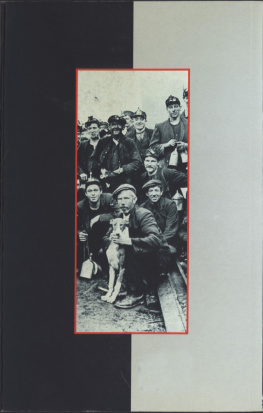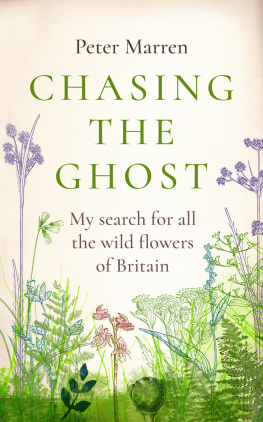Richardson - Britain’s wild flowers : a treasury of traditions, superstitions, remedies and literature
Here you can read online Richardson - Britain’s wild flowers : a treasury of traditions, superstitions, remedies and literature full text of the book (entire story) in english for free. Download pdf and epub, get meaning, cover and reviews about this ebook. City: Great Britain., year: 2017, publisher: National Trust Books, genre: Home and family. Description of the work, (preface) as well as reviews are available. Best literature library LitArk.com created for fans of good reading and offers a wide selection of genres:
Romance novel
Science fiction
Adventure
Detective
Science
History
Home and family
Prose
Art
Politics
Computer
Non-fiction
Religion
Business
Children
Humor
Choose a favorite category and find really read worthwhile books. Enjoy immersion in the world of imagination, feel the emotions of the characters or learn something new for yourself, make an fascinating discovery.
- Book:Britain’s wild flowers : a treasury of traditions, superstitions, remedies and literature
- Author:
- Publisher:National Trust Books
- Genre:
- Year:2017
- City:Great Britain.
- Rating:3 / 5
- Favourites:Add to favourites
- Your mark:
- 60
- 1
- 2
- 3
- 4
- 5
Britain’s wild flowers : a treasury of traditions, superstitions, remedies and literature: summary, description and annotation
We offer to read an annotation, description, summary or preface (depends on what the author of the book "Britain’s wild flowers : a treasury of traditions, superstitions, remedies and literature" wrote himself). If you haven't found the necessary information about the book — write in the comments, we will try to find it.
Britain’s wild flowers : a treasury of traditions, superstitions, remedies and literature — read online for free the complete book (whole text) full work
Below is the text of the book, divided by pages. System saving the place of the last page read, allows you to conveniently read the book "Britain’s wild flowers : a treasury of traditions, superstitions, remedies and literature" online for free, without having to search again every time where you left off. Put a bookmark, and you can go to the page where you finished reading at any time.
Font size:
Interval:
Bookmark:



Wild flowers, their natural histories, their part in our lives, their wider ecology and the many reasons why they are important
If you stay close to nature, to its simplicity, to the small things hardly noticeable, those things can unexpectedly become great and immeasurable.
RAINER-MARIA RILKE, LETTERS TO A YOUNG POET
I love all wild flowers (none are weeds with me) wrote nineteenth-century poet and naturalist John Clare. For many of us, wild flowers link to childhood, to wonder and innocence: a daisy or a dandelion may be among our earliest memories of the natural world. At a very young age, children sense the beauty and mystery of nature: wild flowers imprint on the imagination and are connected with feelings of delight and awe. The memory lingers: traditional flower-rich hay meadows, once an everyday sight and now so rare, express for many of us the soul of the countryside.
Wild flowers and human beings are old acquaintances: they have played a significant part both in our cultural history and in our wider consciousness. On a practical level, meadows have been a feature of the English landscape for centuries: they provided pastureland for livestock, grass and hay for fodder, plant matter for manure, and furze and grasses for bedding. Nectar and pollen from meadowland flowers provided essential food for pollinators of food crops. Wild plants from the fields and woods provided sustenance for the human body, too, and medicine from earliest times. Beyond that, the scope of wild flowers reaches from philosophy and history to the supernatural and trans-human worlds of mythology and magic, alchemy and religion, to the realms of science and art, botany and anthropology through to literature, legend and the fine arts.
Looking at the natural histories of wild flowers, this book explores the web of interrelationships linking us to them. In its origins, the term natural history described a cross-discipline of numerous specialities encompassing scientific analysis and a broad spectrum of the humanities, including theology. A discipline of both natural and cultural components based on accurate observation and validated experience, the study of plants spanned the utilitarian to the philosophical. The plurality of natural history started with Aristotle, built on an enquiry into the underlying concept of the Great Chain of Being, which intuited twentieth-century scientific discoveries of the atomic interconnectedness of the physical world, linking to the chain of dependency that constitutes the complex maze of ecology.
Fossil evidence 60,000 years old shows that Paleolithic man used plants as medicine. Sumerian clay tablets from 3000BC mention opium and myrrh as plant remedies. The first written record, from China around 2800BC, lists 366 medicinal plants, and the Ebers papyrus of 1500BC shows an in-depth knowledge of 850 plants, indicating that herbal medicine flourished in ancient Egypt.
In the Galenic and Hippocratic traditions, Nature was depicted as a homely woman who removed illness from the body by affecting the elements that had caused disease, washing them from the body and bringing healthful balance and harmony: a concept of holism where treatment involved the patient not just physically, but mentally and spiritually too. Plants were believed to have powers to protect the soul from harm, and the divine magic of wild flowers required particular rituals to ensure their potency. Country superstitions sprouted, and with them a tradition of folk cures, which also encompassed the placebo effect. In perceiving the relationship between disease, health and cure, the line between the physical and the psychological was blurred often in a useful way. The prevailing theory of humours, personality types based on body fluids, underlined a psychology of illness and health that, combined with everyday plant science, was to rural herb women, and men, a matter of common sense. Thus superstitions about certain plants and the manner of their gathering were grounded in a particular wisdom. The healing properties of plants even extended to livestock. In 1960 George Ewart Evans wrote in The Horse and the Furrow of fevers treated with agrimony, and of coughs and colds cured with feverfew, belladonna, meadow-rue and horehound. For de-worming, the horsemen used celandine, and to encourage appetite they put gentian, elecampane, horehound and felwort into the horses feed.
Plants are natures great chemists. Wild flowers were (and are) serious medicine. Over 50 per cent of modern prescription drugs are derived from chemical compounds first identified in plants (70 per cent of all anti-cancer drugs came originally from plant chemicals). Herbal medicines do not differ greatly from synthetic drugs in the way they work. Wild plants have proven medicinal properties: antiseptic, antispasmodic, antibacterial, antiviral, diuretic, anti-flatulent, expectorant, anti-inflammatory, antifungal. Others detoxify, bring down fevers, act as antihistamines or afford pain relief. Traditional country cures have been authenticated by scientific research: digoxin from foxgloves, aspirin from willow, colchicine from autumn crocus, opium from poppies, vincristine from periwinkle, galantamine from snowdrops, paclitaxel from yew. Even the commonest weeds such as nettle, chickweed and dandelion possess compounds which have measurable biochemical effects.
After the founding of the National Health Service in Britain in the 1940s, people became dependent on synthetic drugs for everyday complaints that used to be easily and safely treated with natural remedies. Despite the burgeoning of the pharmaceutical companies that have come to dominate western medicine, this herbal knowledge survives in scattered parts of rural Europe where the production and processing of medicinal plants still flourishes, notably in Italy where ancient herbal traditions are kept alive. There are places where women still make traditional family medicines and where you can buy dried plant remedies. Centres of research in cities and towns such as Florence and San Sepulcro continue to evaluate scientifically the therapeutic value of plants in human health. Although European Union regulations for licensing and selling herbal medicines have restricted their commercial use, there are no laws against making your own. With knowledge, care and the right guidance, many plants can still be used for non-serious everyday ailments.
Alongside practical uses in food and drink, plant dyes, aromatics and cosmetics, whimsy found its place in rural tradition. Plants were observed to behave in particular ways in certain conditions, and became weather indicators. Others were oracles of love, or omens of disaster, or luck-bringers. The rich tradition of folklore that developed in the countryside, largely an oral one but now generally relegated to dry-as-dust tomes or the memories of grandparents and great-grandparents, is playful, imaginative and entertaining: in the mid-nineteenth century when it was still common currency, John Clare wrote in one of his Natural History Letters that Superstition with all her deformity is a very poetical personage with me & I love to dwell on such trifles.
Font size:
Interval:
Bookmark:
Similar books «Britain’s wild flowers : a treasury of traditions, superstitions, remedies and literature»
Look at similar books to Britain’s wild flowers : a treasury of traditions, superstitions, remedies and literature. We have selected literature similar in name and meaning in the hope of providing readers with more options to find new, interesting, not yet read works.
Discussion, reviews of the book Britain’s wild flowers : a treasury of traditions, superstitions, remedies and literature and just readers' own opinions. Leave your comments, write what you think about the work, its meaning or the main characters. Specify what exactly you liked and what you didn't like, and why you think so.


















